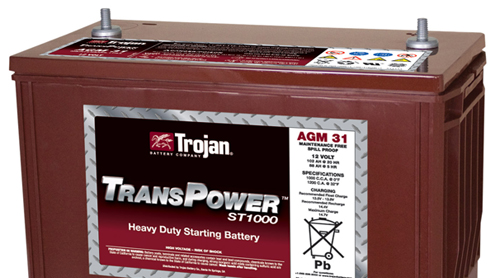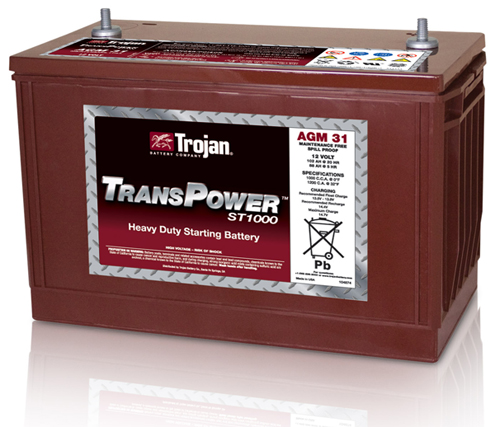
Group 31 AGM battery technology handles the challenges of advanced electrical equipment
By Brad Bisaillon

As more advanced electric equipment such as fare boxes, fire suppression systems and security cameras become incorporated into buses, and federal mandates require them to function under their own power when the bus is not in operation, the battery system becomes all the more strained, particularly those using 8D and 31 flooded battery technologies, which cannot sustain such a continuous draw of energy.
To ease that burden and better manage these loads, Group 31 AGM batteries appear to be the best choice for today’s mass transit bus operations. Group 31 AGM technology is designed to manage the deep discharge these batteries face and still retain the ability to start the vehicle even after a three-day weekend.
Challenges faced by bus operations?
Sitting idle for extended periods of time, the biggest challenge facing bus operators today is the chronic Monday morning “no start.” When buses sit in the storage yard all weekend while continuing to power fare boxes, fire suppression systems and security cameras, 8D and 31 flooded lead acid batteries are drained to a level that requires a jump start.
These buses won’t start on Monday mornings because their traditional 8D and 31 flooded batteries are not able to sustain the long-term drain from these electrical systems.
Trojan Batteries is seeing a shift from the use of 8D and 31 flooded lead acid batteries to Group 31 AGM battery technology to manage these additional required power loads. Within the mass transit industry there is a belief that all AGM batteries are the same. However, there are significant differences in the construction and performance characteristics that determine the ideal regulator setting to maintain the health of the battery and gain maximum life. Onboard systems including engine ECM’s, Vansco and I/O Controls prevent the regulator from being adjusted to any higher than 29.0 volts, narrowing the field of which AGM batteries which best suit particular applications.
Not all AGM batteries will survive at a charge voltage rate as low as 29.0 volts. Selecting the wrong battery technology could result in dramatically reduced battery life by delivering too high a current at too low a voltage, causing premature failure and unnecessary downtime, which can be costly and detrimental to a mass transit line’s on-schedule record.
The usefulness of ultra or supercapacitors
Supercapacitors, also known as ultracapacitors, can provide effective power storage to ensure successful engine starting. Energy stored by ultracapacitors enables the energy to be delivered at a high crank rate in a variety of extreme temperatures, providing reliable and consistent starting of the bus. Some bus fleets are adopting supercapacitor technology for cranking applications and then employing AGM battery technology to manage hotel loads. In the long run supercapacitors are more expensive to buy and maintain versus implementing four Group 31 AGM batteries. Research has shown that the addition of supercapacitors really does not save money over the life of the bus.
One such example is the Trojan TransPower™ ST1000, a high performance Group 31 heavy-duty AGM battery that provides cranking power of 1000 CCA, built specifically for heavy-duty starting and electrical bus applications.
AGM battery construction as used in the Trojan TransPower ST1000 incorporates a heavy-duty plate design thicker than the conventional battery plate, which allows it to maximize charge retention in order to minimize Monday morning “no starts.”
Engineered with a combination of high-density paste and a thick wire grid design, the heavy-duty plate construction can deliver more than double the battery life of a standard 8D or 31 flooded starting battery, providing reliable cranking power and optimum performance in the most challenging conditions.
Brad Bisaillon serves as North American sales and marketing manager for Trojan Battery Company, Santa Fe Springs, CA.
